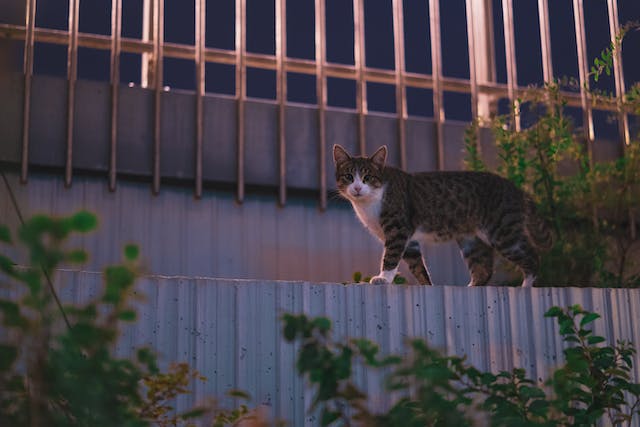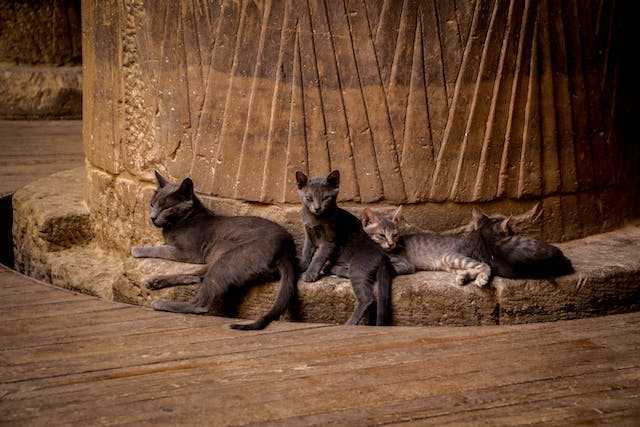Where do feral cats live? Let’s find out together…
Have you ever wondered where those elusive feral cats call home? Well, you’re in luck because today we’re diving into the secret lives of these furry wanderers.
Get ready to uncover the mysterious hideouts and habitats that feral cats choose as their sanctuaries. Let’s embark on this wild adventure together!
Where Do Feral Cats Live
From my experience, feral cats can be found in various environments, such as urban areas, suburban neighborhoods, rural settings, and even in the wild.
They adapt to their surroundings and can live in abandoned buildings, alleys, parks, forests, and other places with access to food and shelter.
Let’s break it down further for better understanding…
Places Where Feral Cats Live

Here are some of the most common places where feral cats live:
1. Abandoned Buildings
Feral cats often seek refuge in abandoned buildings due to the shelter and seclusion they provide.
These structures can offer protection from harsh weather conditions, predators, and human interference.
Abandoned houses, factories, warehouses, and other buildings that are no longer in use can become attractive habitats for feral cats.
The nooks and crannies of these structures serve as ideal hiding spots and provide a sense of security for the cats.
2. Alleyways and Streets
Alleyways and streets are popular locations for feral cats because they offer opportunities for scavenging food and water.
Feral cats are usually skilled hunters, but they may also rely on garbage and discarded food as a source of sustenance.
Alleyways and streets provide access to potential food sources, such as dumpsters, trash cans, or scraps left behind by humans.
Feral cats may establish territories within these areas and navigate through the network of alleys and streets in search of resources.
3. Parks and Green Spaces
Parks and green spaces can provide feral cats with a combination of food, water, and cover.
These areas often have a diverse range of plant life and can support populations of small animals like rodents or birds, which serve as prey for feral cats.
Parks with dense vegetation, such as bushes or trees, offer hiding places for feral cats to rest and remain inconspicuous.
Additionally, proximity to bodies of water, such as ponds or streams, can provide a source of drinking water for the cats.
4. Abandoned Factories and Warehouses

Feral cats are drawn to abandoned factories and warehouses because these structures offer shelter and protection from the elements.
Cats can find refuge in the nooks, crannies, and secluded areas within these buildings, where they can create dens or nesting spots.
The presence of feral cats in such locations is often a result of these areas being undisturbed and providing a quiet environment.
However, it’s important to note that these structures are not ideal living conditions for cats in the long term, as they lack access to proper food, water, and medical care.
5. Dumpsters and Trash Areas
Feral cats are skilled scavengers and will search for food wherever it is available.
Dumpsters and trash areas are attractive to them because discarded food waste can provide a consistent source of sustenance.
These areas often attract rodents and other small animals, which cats prey upon. However, relying solely on garbage for nutrition is not ideal for feral cats, as it may not provide a balanced diet.
It is important to note that feral cats should be provided with a proper diet and access to fresh water to ensure their well-being.
6. Underneath Porches and Decks
Feral cats may seek shelter underneath porches and decks due to the accessible openings and gaps that provide them with a safe and hidden space.
These areas offer protection from the elements and potential predators. Cats will often create makeshift dens or nests using materials they find nearby, such as leaves, grass, or other debris.
If you discover feral cats under your porch or deck, it’s important to approach the situation with caution and respect their space.
It is advisable to contact local animal welfare organizations or feral cat advocacy groups for guidance on humane trapping and implementing long-term solutions for their care.
7. Cemeteries
Feral cats are often attracted to cemeteries because they provide a variety of hiding spots and shelter.
Mausoleums, gravestones, and bushes offer protection from the elements and predators.
Cemeteries tend to have less human activity during certain times of the day, providing a relatively undisturbed environment for feral cats to live and hunt for food.
Additionally, the presence of small animals, such as rodents and birds, in cemeteries can serve as a food source for feral cats.
8. Behind Restaurants and Cafes
Feral cats are drawn to the areas behind restaurants and cafes due to the potential availability of food.
These areas often have dumpsters or garbage bins that may contain food waste or leftovers.
Feral cats are skilled scavengers and can survive by consuming discarded food. They may also rely on the generosity of restaurant staff or customers who may occasionally leave out food or water for them.
The shelter provided by nearby structures, such as walls or storage sheds, can further attract feral cats to these locations.
9. Gardens
Gardens, especially those with dense vegetation or structures like sheds, can be appealing to feral cats.
The vegetation provides cover and hiding spots, while sheds or other structures offer a safe place to rest and seek shelter.
Gardens that have an abundant supply of small animals like rodents or birds can also attract feral cats as they serve as potential prey.
Additionally, gardens may provide a water source, such as ponds or birdbaths, which can be essential for feral cats to survive.
10. Barns and Farm Structures

Feral cats are known to seek shelter in barns and farm structures. These locations provide them with protection from the elements and a potential source of food, such as rodents.
Barns and farm structures often have openings or gaps that allow cats to enter and exit easily.
The presence of feral cats in these areas can be beneficial for farmers as they help control the population of pests like mice and rats.
However, it is important to note that feral cats can also pose a threat to livestock and may need to be managed to prevent any harm.
Learn more about where feral cats sleep.
11. Car Garages and Engine Compartments
Feral cats may also take refuge in car garages and engine compartments. These areas provide warmth and shelter, especially during colder months.
Cats are attracted to the warmth of car engines and may seek shelter in the engine compartments.
It is important for car owners to be cautious and check for the presence of cats before starting their vehicles to avoid any harm to the animals.
Additionally, it is advisable to keep garage doors closed to prevent cats from entering and potentially causing damage.
Read more about the common reasons cats run away.
12. Construction Sites
Construction sites can also serve as temporary habitats for feral cats. The presence of abandoned buildings, debris, and construction materials can provide hiding places and shelter for these cats.
Construction sites often have food sources like dumpsters or leftover scraps, which can attract feral cats.
It is important for construction workers to be aware of the presence of feral cats and take appropriate measures to ensure their safety and prevent any harm to the animals.
Read more about cats hanging around your house.
Frequently Asked Questions
Are feral cats different from stray cats?
Yes, feral cats are different from stray cats. Feral cats are typically born in the wild or have lived outdoors for an extended period, while stray cats are domesticated cats that have become lost or abandoned. Feral cats are often more cautious around humans and may not readily approach them.
How do feral cats survive in the wild?
Feral cats have developed survival skills to adapt to their environment. They rely on their hunting abilities to catch small prey such as rodents, birds, and insects. They also scavenge for food in garbage bins or rely on kind-hearted individuals who provide them with food and water.
Why do feral cats choose certain locations to live?
Feral cats choose locations based on several factors. These include the availability of food sources, such as dumpsters or areas with a high rodent population. They also seek out places that offer shelter, such as dense vegetation, abandoned buildings, or secluded areas where they can hide from predators and harsh weather conditions.
Read more about the reasons your cat disappeared without any trace.
Are feral cats a danger to humans?
Feral cats generally avoid human interaction and pose minimal danger to humans. However, caution should be exercised when approaching feral cats, as they can become defensive if they feel threatened. It’s best to leave them alone and contact local animal welfare organizations or animal control if assistance is needed.
Can feral cats be relocated or domesticated?
Relocating feral cats is a complex process and should be approached with caution. Feral cats are highly adaptable to their environment, and moving them to a new location can be stressful and challenging for them. Domesticating adult feral cats is also difficult, as they have not been socialized with humans from a young age. However, TNR (Trap-Neuter-Return) programs, where feral cats are trapped, spayed or neutered, and returned to their original location, can help control the feral cat population and improve their overall welfare.
Read more about how abandoned cats behave.
Conclusion
In conclusion, feral cats are resourceful creatures, adapting to various environments to survive. From urban alleyways to rural barns, they find shelter where they can. Remember, it’s important to approach feral cats with caution and seek professional help when dealing with their welfare. Together, we can create a safer and more compassionate world for all feline friends.


